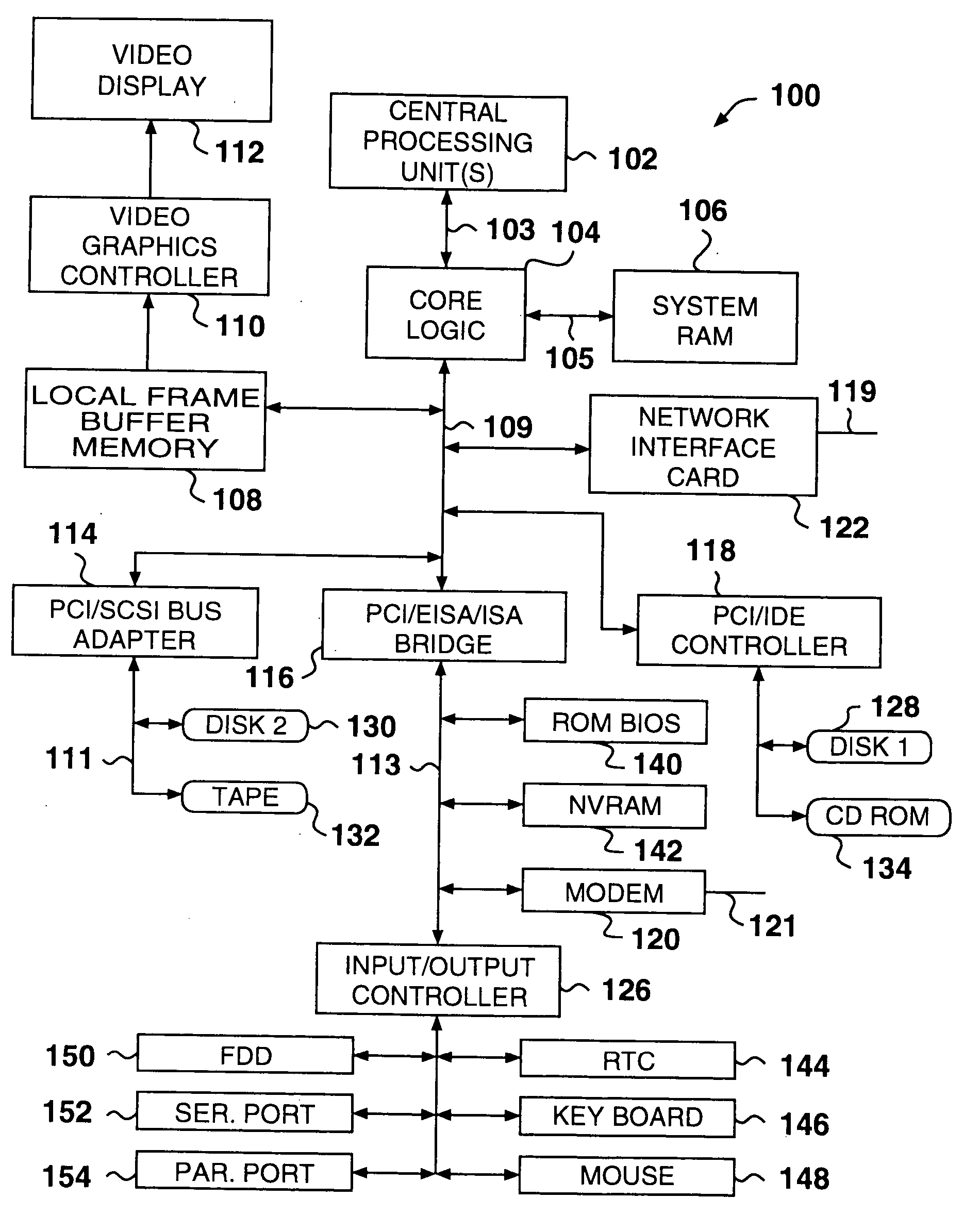High speed peripheral interconnect apparatus, method and system
- Summary
- Abstract
- Description
- Claims
- Application Information
AI Technical Summary
Benefits of technology
Problems solved by technology
Method used
Image
Examples
case 1
1. Data and Trigger Near Writer
In FIG. 69, the transactions from the Writer that update the Data and Trigger do not cross the Bus Bridge, but the transactions from the Reader to discover the new values of the Data and Trigger do.
The path from the Writer to the Data and Trigger do not share a common bridge in this case, so there are no ordering requirement for one write transaction relative to another.
The order of the read of the Trigger relative to the write of the Trigger is irrelevant. Since the synchronizing event is the write of the new value to the Trigger, the Reader is unaffected by reading an old value and continues reading until it finds a new one. When the Reader completes the read that discovers the new value of the Trigger, the Reader begins the read of the Data.
The request to read the Data must push ahead of it the prior write to the Data, so the Reader is guaranteed to observe the new value of the Data. This case illustrates the need for the PCI ordering rule t...
case 2
2. Data Near Writer, Trigger Near Reader
FIG. 70 illustrates a different arrangement of Data and Trigger. In this case the Data is located on the same side of the Bus Bridge as the Writer, but the Trigger is on the same side of the Bus Bridge as the Reader. The write to the Data can be posted in the Target Bridge, and the write to the Trigger can be posted both in the Bus Bridge and the Target Bridge.
As in FIG. 69 the path from the Writer to the Data and Trigger do not share a common bridge in this case, so there are no ordering requirement for one write transaction relative to another.
Since the ordering issues don't begin until the Reader has discovered the new value of the Trigger, the Reader ordering requirements for this case are identical to those of FIG. 69 as well. Even though the write to the Trigger can be posted differently than FIG. 69, the write to the Trigger must complete before the Reader can discover its new value. Reading the Data proceeds exactly as in FIG. 69....
case 3
3. Data and Trigger Near Reader
FIG. 71 illustrates another arrangement of Data and Trigger. In this case both the Data and the Trigger are on the same side of the Bus Bridge as the Reader. The writes to both locations can be posted both in the Bus Bridge and the Target Bridges.
As in the two previous cases the order of the read of the Trigger relative to the write of the Trigger is irrelevant. Since the synchronizing event is the write of the new value to the Trigger, the Reader is unaffected by reading an old value and continues reading until it finds a new one. When the Reader completes the read that discovers the new value of the Trigger, it begins the read of the Data.
Since the read of the data will remain on the Reader's side of the Bus Bridge, the write of the Data must already have completed on this bus before the read begins. This case illustrates the need for two PCI ordering rules that prevent writes moving in the same direction from passing each other. First, a posted...
PUM
 Login to View More
Login to View More Abstract
Description
Claims
Application Information
 Login to View More
Login to View More - R&D
- Intellectual Property
- Life Sciences
- Materials
- Tech Scout
- Unparalleled Data Quality
- Higher Quality Content
- 60% Fewer Hallucinations
Browse by: Latest US Patents, China's latest patents, Technical Efficacy Thesaurus, Application Domain, Technology Topic, Popular Technical Reports.
© 2025 PatSnap. All rights reserved.Legal|Privacy policy|Modern Slavery Act Transparency Statement|Sitemap|About US| Contact US: help@patsnap.com



